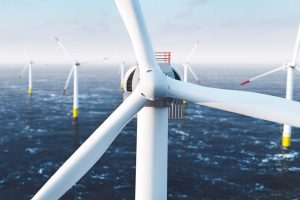Charles Meneveau, the Louis M. Sardella Professor in Mechanical Engineering and associate director of the Institute for Data-Intensive Science and Engineering (IDIES), is an expert in the multiscale aspects of turbulence, large-eddy simulations, and wind farm fluid dynamics.
He employs computational and theoretical tools for his research and pursues subgrid-scale modeling, downscaling methods, fractal geometry, and their applications to large eddy simulation (LES). Research advances were made possible by elucidating the properties of the small-scale motions in turbulent flows and applying the new insights to the development of advanced subgrid-scale models, such as the Lagrangian dynamic model. This model has been implemented in various research and open-source CFD codes (e.g. OpenFoam) and expanded the applicability of LES to complex-geometry flows of engineering and environmental interest, where prior models could not be used. Current LES research is focused on improving wall models and subgrid-scale models for velocity gradients which is of interest to some turbulent multiphase flows.
Among the application areas of LES being pursued in Meneveau’s group is the study of complex flows in large wind farms. Using the improved simulation tools as well as wind tunnel tests, Meneveau and his colleagues identified the important process of vertical entrainment of mean flow kinetic energy into an array of wind turbines. This research has clarified the mechanisms limiting wind plant performance at a time when there is enormous growth in wind farms. The research has led to new engineering models that will allow for better-designed wind farms thus increasing their economic benefit and helping to reduce greenhouse gas emissions from fossil fuels.
Meneveau has participated in efforts to democratize access to valuable “big data” in turbulence. As deputy director of JHU’s Institute for Data-Intensive Engineering and Science, he led the team of computer scientists, applied mathematicians, astrophysicists, and fluid dynamicists that built the Johns Hopkins Turbulence Databases (JHTDB). This open numerical laboratory provides researchers from around the world with user-friendly access to large data sets arising from direct numerical simulations of various types of turbulent flows. To date, hundreds of researchers worldwide have used the data, and more than 250 peer-reviewed papers have been based on data sampled from JHTDB. The system has demonstrated how data resulting from large, world-class numerical simulations can be shared with many researchers who lack the massive supercomputing resources needed to generate such data.
Meneveau has also performed groundbreaking research on understanding several multiscale aspects of turbulence. As part of his doctoral work at Yale, Meneveau and his advisor established the fractal and multifractal theory for turbulent flows and confirmed the theory using experiments. Interfaces in turbulence were shown to have a fractal dimension of nearly 7/3, where the 1/3 exponent above the value of two valid for smooth surfaces could be related to the classic Kolmogorov theory. And a universal multi-fractal spectrum was established, leading to a simple cascade model, which has since been applied to many other physical, biological, and socio-economic systems. Later, as a postdoc at Stanford University’s Center for Turbulence Research, Meneveau pioneered the application of orthogonal wavelet analysis to turbulence, introducing the concept of wavelet spectrum and other scale-dependent statistical measures of variability.
He is a member of the National Academy of Engineering. He received a BS from the Universidad Técnica Federico Santa Maria (1985); a Master of Science (1985), a Master of Philosophy (1987), and a PhD (1989)—all at Yale University.



